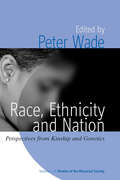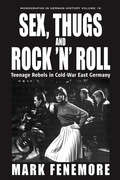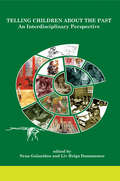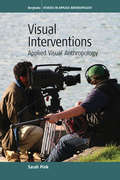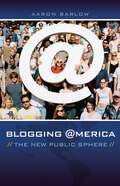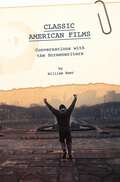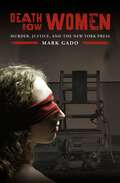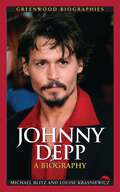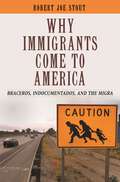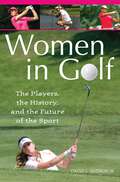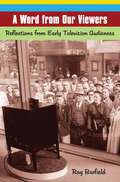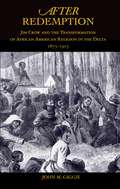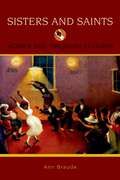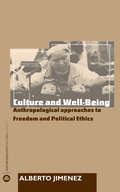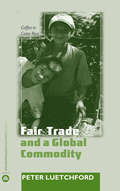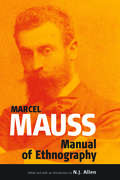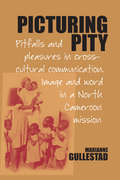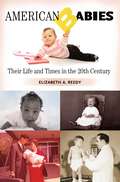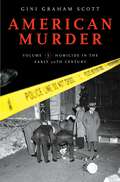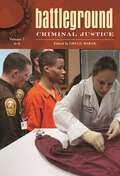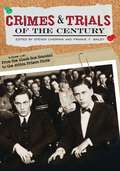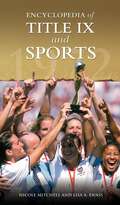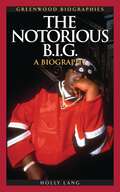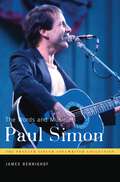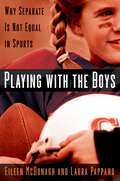- Table View
- List View
Race, Ethnicity, and Nation: Perspectives from Kinship and Genetics (Studies of the Biosocial Society #1)
by Peter WadeRace, ethnicity and nation are all intimately linked to family and kinship, yet these links deserve closer attention than they usually get in social science, above all when family and kinship are changing rapidly in the context of genomic and biotechnological revolutions. Drawing on data from assisted reproduction, transnational adoption, mixed race families, Basque identity politics and post-Soviet nation-building, this volume provides new and challenging ways to understand race, ethnicity and nation.
Sex, Thugs and Rock 'n' Roll: Teenage Rebels in Cold-War East Germany (Monographs in German History #16)
by Mark FenemoreA fascinating and highly readable account of what it was like to be young and hip, growing up in East Germany in the 1950s and 1960s. Living on the frontline of the Cold War, young people were subject to a number of competing influences. For young men from the working class, in particular, a conflict developed between the culture they inherited from their parents and the new official culture taught in schools. Merging with street gangs, new youth cultures took shape, which challenged authority and provided an alternative vision of modernity. Taking their fashion cues, music and icons from the West, they rapidly came into conflict with a didactic and highly controlling party-state. Charting the clashes which occurred between teenage rebels and the authorities, the book explores what happened when gender, sexuality, Nazism, communism and rock 'n' roll collided during a period, which also saw the building of the Berlin Wall.
Telling Children About the Past: An Interdisciplinary Perspective (International Monographs in Prehistory: Ethnoarchaeology Series #6)
This book brings together archeologists, historians, psychologists, and educators from different countries and academic traditions to address the many ways that we tell children about the (distant) past. Knowing the past is fundamentally important for human societies, as well as for individual development. The authors expose many unquestioned assumptions and preformed images in narratives of the past that are routinely presented to children. The contributors both examine the ways in which children come to grips with the past and critically assess the many ways in which contemporary societies and an increasing number of commercial agents construct and use the past.
Visual Interventions: Applied Visual Anthropology (Studies in Public and Applied Anthropology #4)
by Sarah PinkVisual anthropology has proved to offer fruitful methods of research and representation to applied projects of social intervention. Through a series of case studies based on applied visual anthropological work in a range of contexts (health and medicine, tourism and heritage, social development, conflict and disaster relief, community filmmaking and empowerment, and industry) this volume examines both the range contexts in which applied visual anthropology is engaged, and the methodological and theoretical issues it raises.
Blogging America: The New Public Sphere (New Directions in Media)
by Aaron BarlowAs blogs have evolved over the last few years, they have begun to take on distinct characteristics depending on audience and purpose. Though political blogs remain the most high profile (and most read), other types of blogs are gaining in strength and visibility. This book—a follow-up volume to Barlow's Rise of the Blogosphere, which examined the historical context for the modern blog—provides an examination of the many current aspects of the blogosphere, from the political to the professional to the personal, with many stops in between. Given that millions of blogs have been created over the past five years and yet more come online at an undiminished rate, and given that enthusiasm for both reading them and writing them has yet to wane, it is likely that the blog explosion will continue indefinitely.As blogs have evolved over the last few years, they have begun to take on distinct characteristics depending on audience and purpose. Though political blogs remain the most high profile (and most read), other types of blogs are gaining in strength and visibility. This book—a follow-up volume to Barlow's Rise of the Blogosphere, which examined the historical context for the modern blog—provides an examination of the many current aspects of the blogosphere, from the political to the professional to the personal, with many stops in between.Areas covered include the personal blog; the political blog; the use of blogs by various religious communities both for discussion within communities and for outreach; the growth of blogs dedicated to specific geographic communities, and their relations with older local media; blogs dedicated to technical subjects, particularly relating to computers; blogs and business; blogs sparked by video games, movies, music, and other forms of entertainment; and more. Given that millions of blogs have been created over the past five years and yet more come online at an undiminished rate, and given that enthusiasm for both reading them and writing for them has yet to wane, it is likely that the blog explosion will continue indefinitely.
Classic American Films: Conversations with the Screenwriters
by William BaerClassic American Films explores the origin and development of many of the most influential and revered films in cinema history, and does so with the aid and insight of the people who actually wrote the screenplays. These lively, candid, in-depth interviews are filled with fascinating new material (details, anecdotes, judgments, and opinions) about the creative and collaborative processes that went into the making of these extraordinary films. In the past, Hollywood screenwriters—the original artists—have often been overlooked. This book is a special tribute to the invaluable contributions of these cinematic visionaries, many of whom are considered among the greatest screenwriters in American film history. As Orson Welles once said, In my opinion, the writer should have the first and last word in filmmaking. This book allows them to have that exciting opportunity.Some of the highlights from these interviews include: Betty Comden and Adolph Green's explaining how a nightclub skit became the premise for Singin' in the Rain; Ernest Lehman's description of how, while in conversation with Hitchcock, his unconscious suddenly solved the plot problems in North by Northwest; Carl Gottlieb's remembrance of the terrible pressure involved with writing the script for Jaws while shooting was already underway; and Sylvester Stallone's account of how he received final approval to star in Rocky from studio executives who thought he was just another actor.
Death Row Women: Murder, Justice, and the New York Press (Crime, Media, and Popular Culture)
by Mark GadoDuring the 20th century, only six women were legally executed by the State of New York at Sing Sing Prison. In each case, the condemned faced a process of demonization and public humiliation that was orchestrated by a powerful and unforgiving media. When compared to the media treatment of men who went to the electric chair for similar offenses, the press coverage of female killers was ferocious and unrelenting. Granite woman, black-eyed Borgia, roadhouse tramp, sex-mad, and lousy prostitute are just some of the terms used by newspapers to describe these women. Unlike their male counterparts, females endured a campaign of expulsion and disgrace before they were put to death. Not since the 1950s has New York put another woman to death.Gado chronicles the crimes, the times, and the media attention surrounding these cases. The tales of these death row women shed light on the death penalty as it applies to women and the role of the media in both the trials and executions of these convicts. In these cases, the press affected the prosecutions, the judgements, and the decisions of authorities along the way. Contemporary headlines of the era are revealing in their blatant bias and leave little doubt of their purpose. Using family letters, prison correspondence, photographs, court transcripts, and last- minute pleas for mercy, Gado paints a fuller picture of these cases and the times.
Johnny Depp: A Biography (Greenwood Biographies)
by Michael Blitz Louise KrasniewiczFrom the sweet but asocial adolescent in Edward Scissorhands to Captain Jack Sparrow in the Pirates of the Caribbean franchise, Johnny Depp has brought to life some of the most challenging, quirky and compelling characters in Hollywood history. Often considered the quintessential outsider, Depp has fascinated his fans for more than two decades. This biographical study invites fans and critics alike to take a close look at the person behind the movie star, his body of work as an actor, and the unique set of heroes and anti-heroes he has personified throughout his career.
Why Immigrants Come to America: Braceros, Indocumentados, and the Migra
by Robert Joe StoutStout plunges the reader into the social and political upheaval that the immigration question exerts on 21st century America. Personal encounters, conversations, interviews and newspaper accounts provide a vivid and accurate picture of indocumentado life, both in the workplace and at home. They highlight the successes and failures of immigrants, as well as the challenges and contradictions that those who pursue them and deport them face. He chronicles the effects of 60 years of political seesawing that has granted citizenship to over 3 million former Mexican nationals and left another 7 million in limbo. And in addition, he examines why six decades of surveillance, pursuit, raids, fences and deportations have only slightly altered, but not stemmed, the immigrant flow.Immigration and Customs Enforcement (ICE) agents sweep through factories, farms and construction sites from Maine to California herding handcuffed illegals into detention facilities. Immigrants and their supporters block highways, repudiating a House of Representatives proposal to make undocumented entry into the United States a felony. National Guardsmen head towards the U. S.- Mexico frontier where hundreds of men, women and children die every year of heat stroke, dehydration, and starvation. Few other issues have provoked such national outrage since integration and opposition to the war in Vietnam crested in the 1960s. Despite the clamor, the rhetoric, the accusations and the arrests, few people really understand who the undocumented immigrants are, how they get into the United States and why they keep coming.Stout explains in vivid detail why Spanish-speaking workers leave their homes—and often risk their lives—to seek employment north of the border. The book includes hundreds of interviews and experiences he has shared with migrants, politicians, law officers and farm and sweatshop employers. It's a battleground—it never was before, Mexican-born immigrant Jesus Francisco Reyes told Stout as he watched Border Patrol officers follow helicopter searchlights across a brambled mountainside 80 miles east of San Diego, California. The indocumentados the migra apprehend and send back across the border will add to already overwhelming statistics: over 1 million deportations every year, an estimated 600,000 successful new arrivals, and expenditures on so-called border security topping billions of dollars a year. More than 23 million Americans of Mexican descent live in the United States, 7 million of whom do not have valid work or residency papers. Millions of these immigrants live in poverty but more than 90 percent find employment and over 60 percent send portions of their earnings to their families south of the border. Their remittances provide nearly 70 percent of the incomes of thousands of towns and villages throughout northern and central Mexico and much of Central America. Without them, the economies of those countries would have foundered.
Women in Golf: The Players, the History, and the Future of the Sport
by David L. Jr.Despite the thirst for more information about women's golf, very little exists about its history outside of books about the legendary Babe Didrikson Zaharias. Hudson fills this void, offering a complete history of women in golf. He focuses on the fascinating development of women's golf, the creation of the women's tour, star athletes of the past, the astronomical rise of the present-day tour greats, and the future of the sport.Golf may well have replaced baseball as America's pastime, and the sport enjoys incredible popularity across the globe. At the professional level, women's golf continues to escalate in popularity and media attention, particularly with the dominance of LPGA champion Annika Sorenstam and the interest surrounding teenage phenom Michelle Wie.Despite the thirst for more information about women's golf, very little exists about its history outside of books about the legendary Babe Didrikson Zaharias. Hudson's new book fills this void, focusing on the fascinating development of women's golf, the creation of the women's tour, star athletes of the past, and the astronomical rise of the present-day tour greats. In addition, Hudson examines women's golf in the context of the country's history of discrimination against women. Women's golf grew in popularity after the passage of the 19th Amendment in 1920, granting the right of suffrage. Unfortunately, gender discrimination remains a reality in the world of golf in certain locales of country club golf. Nonetheless, women's golf has never been more popular. For example, the Futures Tour, where girls and young women hone their skills on the way to the LPGA, has grown to more than 300 players from 27 countries, making it the largest international developmental tour in the world. And the 2006 LPGA Tour featured 34 events with prize money nearing $50 million, the highest ever in LPGA history. In 1890, Hudson writes, the Washington Post reported that some girls are anxious to learn golf, because they are really fond of sport and exercise; others, because it gives them a chance to show off a natty suit. Those girls are now acknowledged as women—and this book shows how very far they, and their sport, have come.
A Word from Our Viewers: Reflections from Early Television Audiences
by Ray BarfieldTracing public and critical responses to TV from its pioneering days, this book gathers and gives context to the reactions of those who saw television's early broadcasts—from the privileged few who witnessed experimental and limited-schedule programming in the 1920s and 1930s, to those who bought TV sets and hoisted antennae in the post-World War II television boom, to still more who invested in color receivers and cable subscriptions in the 1960s. While the first two major sections of this study show the views of television's first broad public, the third section shows how social and media critics, literary and visual artists, and others have expressed their charmed or chagrinned responses to television in its earliest decades.Media-jaded Americans, especially younger ones, would be surprised to know how eagerly their forebears anticipated the arrival of television. Tracing public and critical responses to TV from its pioneering days, this book gathers and gives context to the reactions of those who saw television's early broadcasts-from the privileged few who witnessed experimental and limited-schedule programming in the 1920s and 1930s, to those who bought TV sets and hoisted antennae in the post-World War II television boom, to still more who invested in color receivers and cable subscriptions in the 1960s.Viewers' comments recall the excitement of owning the first TV receiver in the neighborhood, show the vexing challenges of reception, and record the pleasure that all young and many older watchers found in early network and local programs from the beginning to the fast-changing 1960s. While the first two major sections of this study show the views of television's first broad public, the third section shows how social and media critics, literary and visual artists, and others have expressed their charmed or chagrinned responses to television in its earliest decades.
After Redemption: Jim Crow and the Transformation of African American Religion in the Delta, 1875-1915
by John M. GiggieAfter Redemption fills in a missing chapter in the history of African American life after freedom. It takes on the widely overlooked period between the end of Reconstruction and World War I to examine the sacred world of ex-slaves and their descendants living in the region more densely settled than any other by blacks living in this era, the Mississippi and Arkansas Delta. Drawing on a rich range of local memoirs, newspaper accounts, photographs, early blues music, and recently unearthed Works Project Administration records, John Giggie challenges the conventional view that this era marked the low point in the modern evolution of African-American religion and culture. Set against a backdrop of escalating racial violence in a region more densely populated by African Americans than any other at the time, he illuminates how blacks adapted to the defining features of the post-Reconstruction South-- including the growth of segregation, train travel, consumer capitalism, and fraternal orders--and in the process dramatically altered their spiritual ideas and institutions. Masterfully analyzing these disparate elements, Giggie's study situates the African-American experience in the broadest context of southern, religious, and American history and sheds new light on the complexity of black religion and its role in confronting Jim Crow.
Sisters and Saints: Women and American Religion (Religion in American Life)
by Ann Braude"Women are the backbone of the church," says an old African-American aphorism. Since the 1660s, women have made up the majority of members in almost all American religious groups. They have provided essential financial and social support and worked tirelessly in the background of church-based activities. Throughout American history, women have raised money for churches and synagogues, embroidered altar cloths, taught Sunday school, prepared parish meals, and sung in the choir. They have educated their children in their beliefs and taken them to their places of worship. Yet it is primarily men who have historically occupied the high rungs of church hierarchy and made the important decisions affecting their congregations. Ann Braude examines the central role of women in American religious history, focusing on their efforts to achieve greater recognition and equal rights, their recent admission to religious leadership, and the emergence of feminist theology in the late 20th century. Colonist Margaret Winthrop, African-American preacher Jarena Lee, Christian Science founder Mary Baker Eddy, and Zionist leader Henrietta Szold are among the women discussed in these pages who have made major contributions to the spiritual and material growth of religious organizations in America.
Culture and Well-Being: Anthropological Approaches to Freedom and Political Ethics (Anthropology, Culture and Society)
by Alberto Corsin JimenezThe concept of well-being has emerged as a key category of social and political thought, especially in the fields of moral and political philosophy, development studies and economics. *BR**BR*This book takes a critical look at the notion of well-being by examining what well-being means, or could mean, to people living in a number of different regions including Sudan, Nepal, Papua New Guinea, India, Sierra Leone and the UK. *BR**BR*The contributors take issue with some of the assumptions behind Western concepts of well-being. They explore what characterises a 'good life' and how this idea has been affected by globalisation and neoliberalism. The book makes a major contribution to social theory by presenting new analytical models that make sense of the changing shapes of people's life and ethical values.
Fair Trade and a Global Commodity: Coffee in Costa Rica (Anthropology, Culture and Society)
by Pete LuetchfordFair trade is widely regarded as a universal good. This fascinating anthropological study takes a closer look at a coffee-growing community and cooperatives in Costa Rica - and subjects the fair trade movement to critical scrutiny. *BR**BR*As with conventional coffee, Western demand for organic fair trade produce is largely met by more affluent individuals with larger landholdings. As a result, it is caught up in the conflicts of interest and resentments that are part of the coffee industry as a whole. Ultimately fair trade fails to escape divisions that characterise other forms of production and consumption.*BR**BR*All growers are united in their criticism of the high margins accumulated by regional and transnational processors and exporters. Sustainability, just rewards and social cohesion have formed part of the world view of these agricultural communities for decades. This book shows how there is much common ground between the worlds of the commodity grower and the priorities of the fair trade movement - if not necessarily always in the ways we might suppose.
The Manual of Ethnography (Publications of the Durkheim Press #0)
by Marcel MaussMarcel Mauss (1872-1950) was the leading social anthropologist in Paris between the world wars, and his Manuel d’ethnographie, dating from that period, is the longest of all his texts. Despite having had four editions in France, the Manuel has hitherto been unavailable in English. This contrasts with his essays, longer and shorter, many of which have long enjoyed the status of classics within anthropology. We are therefore pleased to present, in the English language for the first time, this extraordinary work that is based on the more than thirty lectures Mauss delivered each year under the title “Instructions in descriptive ethnography, intended for travelers, administrators and missionaries.” Despite his dates, Mauss’s treatment of fundamental questions, such as how to conceptualize and classify the range of social phenomena known to us from history and ethnography, has lost none of its freshness.
Picturing Pity: Pitfalls and Pleasures in Cross-Cultural Communication.<BR>Image and Word in a North Cameroon Mission
by Marianne GullestadPicturing Pity is the first full length monograph on missionary photography. Empirically, it is based on an in-depth analysis of the published photographs taken by Norwegian evangelical missionaries in Northern Cameroon from the early nineteen twenties, at the beginning of their activities in this region, and until today. Being part of a large international movement, Norway sent out more missionaries per capita than any other country in Europe. Marianne Gullestad's main contention is that the need to continuously justify their activities to donors in Europe has led to the creation and maintenance of specific ways of portraying Africans. The missionary visual rhetoric is both based on earlier visualizations and has over time established its own conventions which can now also be traced within secular fields of activity such as international development agencies, foreign policy, human relief organizations and the mass media. Picturing Pity takes part in the present "pictorial turn" in academic teaching and research, constituting visual images as an exciting site of conversation across disciplinary lines.
American Babies: Their Life and Times in the 20th Century (Growing Up: History of Children and Youth)
by Elizabeth A. ReedyThe focus of this book is the journey babies have made over the past century. The rise of the middle class in America dictated major changes in the ways babies were fed, cared for, and raised. Social programs focused on improving water and sanitation programs for all, which led directly to decreased infection among infants and improved morbidity and mortality rates. Other programs also focused attention on babies. Advances in medicine allowed infants to be immunized against once-deadly and disabling diseases and to survive congenital defects, premature birth, and infectious disease. Physicians helped infertile couples conceive and carry a baby to term. Prenatal care helped mothers give birth to a healthy baby. Early intervention services gave infants an advantage as they faced growing up in the modern era. Today, most American babies are better off than they were in 1901. Overall they are bigger, healthier, and much more likely to survive the first year. But challenges remain. By reviewing the events of the past century, Reedy hopes we can make even more of a difference in the lives of American babies in the century to come.In 1900, most babies were born at home. Infant mortality was high and most families could expect to lose one or more of their babies within the first year of life. A family was expected to have babies, and they were certainly wanted in most situations, however, they did not generally receive the attention they do today. In the early years of the 21st century, the birth of a baby is a time of joy for most parents and extended families. Birth occurs most often in a hospital delivery room with the father and sometimes other family members present. While the infant mortality rate in the United States still lags behind many other developed countries, it has significantly improved over the past century, and infant death is not a family expectation.The main focus of this book is the journey babies have made over the past century. The rise of the middle class in America dictated major changes in the ways babies were fed, cared for, and raised. No longer a financial necessity as in an agrarian society, babies became a symbol of middle class prosperity and parents basked in the reflected glow. Social programs, authorized and regulated by federal and state government, became a reality. Progressive Era reformers focused on improving water and sanitation programs for all, which led directly to decreased infection among infants and improved the dismal morbidity and mortality rates prevalent among all social classes. Other programs, such as the Shepard-Towner Act, the Social Security Act, and Lyndon Johnson's Great Society initiatives also focused attention on babies. Advances in medicine allowed infants to be immunized against once-deadly and disabling diseases and to survive congenital defects, premature birth, and infectious disease. Physicians discovered the means to help infertile couples conceive and carry a baby to term. Prenatal care helped mothers prepare for the birth of a healthy baby. Early intervention services by educators, social workers, and others gave infants an advantage as they faced growing up in the modern era.At the beginning of the 21st century, most American babies are better off than they were in 1901. Overall they are bigger, healthier, and much more likely to survive the first year. But challenges remain. By reviewing the events of the past century, Reedy hopes we can make even more of a difference in the lives of American babies in the century to come.
American Murder [2 volumes]: [2 volumes]
by Gini Graham Ph.DAmerica has long had the reputation as the most violent and murderous of modern industrialized nations. Even while violent crime has dropped in recent years, our murder rate is still incredibly high. Since the beginning of the 20th century, our society has undergone profound changes. Our technologies have advanced, but the motives and methods for murder and escaping the long arm of the law have kept pace, often capitalizing on available technologies. In addition, as the century progressed, the media became an integral part of murder in America, helping investigations, glamorizing murder, and bringing it into our homes on a daily basis. Here, Scott examines the changing face of murder in the context of societal changes and traces the advances in investigative techniques and technologies. Each chapter offers vivid accounts of the most notorious and representative murders for each time period, focusing especially on those murderers who have had the edge on their pursuers, even escaping detection to this day.Beginning at the turn of the century, Scott details one of the most notorious cases of the day, in which a jealous woman poisoned the wife of her lover. The book ends with the still-unsolved Tupac Shakur murder case. Taking readers through the various developments in methods of murder, and the techniques used to capture the criminals, Scott provides a fascinating overview of the way murder has changed through the decades and how law enforcement has kept pace. This insightful book sheds light on both our fascination with murder and on murderers and their nemeses over the last one hundred years.
Battleground: [2 volumes] (Battleground Series)
There are many controversial aspects of our criminal justice system, and this encyclopedia examines the most significant controversies throughout American history with emphasis on current debates, trends, and issues. Arranged alphabetically, approximately 100 entries cover background, explanations, notable cases and events, various sides of an issue, and what to expect in the future. Entries are objective and factual, allowing readers to formulate their own conclusions. Sidebars and case examples help to illustrate each entry, and sources for further reading point readers to other important materials.Given the prevalance of controversial criminal justice topics in the news, this timely reference is an important resource for anyone interested in crime and justice. Entries include: Boot Camps, Corporal Punishment, DNA Evidence, Domestic Violence, Expert Testimony, Eye Witness Identifications, Gun Control, Homeland Security, International Criminal Court, Legalization of Marijuana, Mental Health and Insanity, Police Brutality, Prison Violence, Racial Profiling, School Violence, Sex Offender Laws, Stalking Laws, Supermax Prisons, Three Strikes, Treating Juveniles as Adults, War on Drugs, and more.
Crimes and Trials of the Century [2 volumes] [2 volumes]: 2 volumes [2 volumes]
What do O. J. Simpson, the Lindbergh baby, and Gary Gilmore have in common? They were all the focus of famous crimes and/or trials in the United States. In this two-volume set, historical and contemporary cases that not only shocked the nation but that also became a part of the popular and legal culture of the United States are discussed in vivid, and sometimes shocking, detail. Each chapter focuses on a different crime or trial and explores the ways in which each became famous in its own time. The fascinating cast of characters, the outrageous crimes, the involvement of the media, the actions of the police, and the trials that often surprised combine to offer here one of the most comprehensive sets of books available on the subject of famous U.S. crimes and trials.The public seems fascinated by crime. News and popular media sources provide a steady diet of stories, footage, and photographs about the misfortunes of others in order to satisfy this appetite. Murder, rape, terrorism, gang-related activities, and other violent crimes are staples. Various crime events are presented in the news every day, but most of what is covered is quickly forgotten. In contrast, some crimes left a lasting impression on the American psyche. Some examples include the assassination of President John F. Kennedy, the bombing of the Murrah building in Oklahoma City, and the September 11th attacks. These events, and other significant cases, are immediately or on reflection talked about as crimes of the century. They earn this title not only because they generate enormous publicity, but because of their impact on American culture: they help define historical eras, influence public opinion about crime, change legal process, and focus concern about important social issues. They seep into many other shared aspects of social life: public conversation, fiction and nonfiction, songs, poems, films, and folk tales.This set focuses on the many crimes of the century of the last 100 years. In vivid detail, each crime is laid out, the investigation is discussed, the media reaction is described, the trial (if there was one) is narrated, the resolution is explored, and the significance of the case in terms of its social, political, popular, and legal relevance is examined. Illustrations and sidebars are scattered throughout to enliven the text; print and electronic resources for further reading and research are offered for those wishing to dig deeper. Cases include the Scopes Monkey trial, Ted Bundy, Timothy McVeigh, O.J. Simpson, Leopold and Loeb, Fatty Arbuckle, Al Capone, JonBenet Ramsey, the Lacy Peterson murder, Abu Ghraib, Columbine and more.
Encyclopedia of Title IX and Sports
by Nicole MitchellFierce debate has long loomed over Title IX, the landmark legislation prohibiting sex discrimination in schools, whether in academics or athletics. Since its inception, Title IX has inspired both backlash and backlash-against-backlash commentary. Supporters contend that the legislation is a long overdue measure in securing equal opportunities for girls and women in America's school and university athletics. Opponents argue that Title IX is nothing more than a government-enforced quota system that is damaging men's sports programs. Caught in the middle are the schools that struggle to develop equitable sports programs for male and female athletes. From the hard fought passing of Title IX in 1972 to the most recent debates surrounding compliance, this encyclopedia explores the significant individuals, events, key concepts, controversies, and legal cases revolving around Title IX and its application in collegiate athletics.This encyclopedia, the first of its kind, offers a comprehensive guide to various aspects and wide ranging issues associated with Title IX and sports. With more than 150 in-depth entries, this inclusive and authoritative reference will appeal to students, scholars, and general readers interested in both the historic framework and contemporary implications of Title IX and academic athletics. Sample entries include: A League of Their Own Association for Intercollegiate Athletics for Women v. NCAA (1984) Bonnie Blair Molly Machine Gun Bolin California NOW v. Board of Trustees of California State Universities (1993) Commission on Equal Opportunity in Athletics Equity in Athletics Disclosure Act Patsy Mink Ms. Foundation National Women's Football League National Wrestling Coaches Assocation Pederson v. Louisiana State University (2000) Three Part Test
The Notorious B.I.G.: A Biography (Greenwood Biographies)
by Holly LangOver ten years since his death, Biggie Smalls, also known as The Notorious B.I.G., is considered one of the most influential rappers of all time, a credit continually given by numerous hip-hop artists. Raised in Brooklyn during the crack-cocaine boom of the late 1970s and early 1980s, Smalls (born Christopher Wallace) worked as a drug dealer before ultimately deciding to become a rapper. With Sean Puffy Combs and Bad Boy Entertainment, Biggie rocketed to fame as one of hip hop's most popular artists. But with the success came controversy: the friendship-turned-feud between Biggie and Tupac fueled the rivalry between East Coast and West Coast hip hop, a gangsta-rap battle that many believe led to the murder of both rappers. While still unsolved, the murder of Biggie in 1997 sparked numerous investigations, litigation, and the dismantling of a Los Angeles Police Department task force in what is considered the largest scandal in LAPD history. Ten years later, Biggie is celebrated as the King of East Coast hip hop. In this biography author Holly Lang recounts the life, music, and legacy of Biggie and investigates the events surrounding his murder.
The Words and Music of Paul Simon (The Praeger Singer-Songwriter Collection)
by James BennighofPaul Simon is commonly acknowledged to be one of the most successful singer-songwriters of the pop-rock era. His work has flourished in the context of Simon and Garfunkel as well as in his own solo career. Starting with the folk-rock style that marked his earliest significant success, he has drawn on a wide variety of influences, including many American traditions and, later, many international ones as well. He has won multiple Grammy awards in both the duo and the solo phases of his career. His songwriting has also provided the impetus for brief forays into film and musical theatre. After providing a brief biographical overview, this work examines Simon's songwriting work in depth, providing a critical discussion of each song as a fusion of text and music so as to help the reader to identify elements that enhance appreciation.A particularly valuable contribution in this context is the discussion of the wide variety of musical elements that contribute significantly to the value of Simon's work. These include such easily-understandable issues as verse-chorus structure, melodic variation, selection of particular instruments and even performers, variation of musical style within a song, general harmonic characteristics, relationships among keys, rhythm and pacing of text, etc. While the book proceeds chronologically through Simon's recorded output, specific threads are developed throughout, and the discussion of individual songs takes place in the context of these threads, both drawing on them and developing them further. The diversity of Paul Simon's work reflects his very American background, and no discussion of American music is complete without accounting for his influence.
Playing With the Boys: Why Separate is Not Equal in Sports
by Eileen McDonagh Laura PappanoAthletic contests help define what we mean in America by "success." By keeping women from "playing with the boys" on the false assumption that they are inherently inferior, society relegates them to second-class citizens. In this forcefully argued book, Eileen McDonagh and Laura Pappano show in vivid detail how women have been unfairly excluded from participating in sports on an equal footing with men. Using dozens of powerful examples--girls and women breaking through in football, ice hockey, wrestling, and baseball, to name just a few--the authors show that sex differences are not sufficient to warrant exclusion in most sports, that success entails more than brute strength, and that sex segregation in sports does not simply reflect sex differences, but actively constructs and reinforces stereotypes about sex differences. For instance, women's bodies give them a physiological advantage in endurance sports, yet many Olympic events have shorter races for women than men, thereby camouflaging rather than revealing women's strengths.
